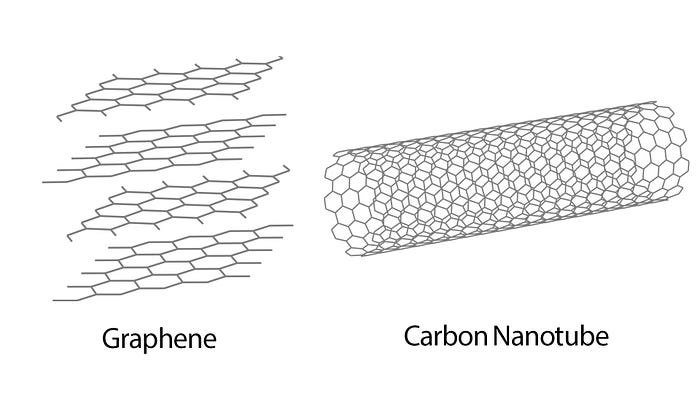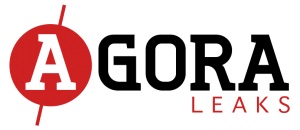يجب أن تحميك أقنعة الوجه ، لا تعرضك لخطر أكبر. ومع ذلك ، كشفت إذاعة كندا (آذار 2021) أنه تم نصح سكان كيبيك وأوتاوا بعدم استخدام أنواع معينة من الأقنعة التي تحتوي على الجرافين لأنها قد تكون ضارة.
المادة المخالفة في الأقنعة هي الجرافين – وهو شكل من الكربون يتكون من رقائق رفيعة نانوية من ذرات كربون مرتبة سداسية الشكل. إنها مادة لها عدد من الخصائص المفيدة المحتملة ، بما في ذلك القدرة على قتل البكتيريا والفيروسات عند تعرضهم لها.
ومع ذلك ، على الرغم من العديد من الاستخدامات المحتملة ، لا تزال هيئة المحلفين العلمية خارج نطاق العمل عندما يتعلق الأمر بمدى أمان المادة.
2 أبريل 2021: أصدرت وزارة الصحة الكندية نصيحة تطلب من الأشخاص “عدم استخدام أقنعة الوجه المصنفة لاحتواء الجرافين أو الجرافين من الكتلة الحيوية.” المزيد من المعلومات هنا.
كما هو الحال مع جميع المواد ، تعتمد المخاطر الصحية المحتملة المرتبطة بالجرافين على ما إذا كان يمكن أن يدخل الجسم ، وأين يذهب إذا كان ذلك ممكنًا ، وماذا يفعل عندما يصل إلى هناك ، ومقدار ما يلزم لإحداث ضرر كاف ليكون مصدر قلق.
لسوء الحظ ، على الرغم من أن هذه أسئلة أساسية جدًا ، إلا أنه لا توجد إجابات كثيرة قادمة عندما يتعلق الأمر باستخدام المادة في أقنعة الوجه.
تنبع المخاوف الحالية بشأن استخدام الجرافين في أقنعة الوجه من مذكرة أرسلتها وزارة الصحة الكندية إلى وزارات الصحة في المقاطعات والأقاليم الكندية في 25 مارس. لم يتم الإعلان عن هذه المذكرة ، حتى الآن..
في المذكرة ، توصي وزارة الصحة الكندية المستخدمين “بالتوقف عن شراء واستخدام أقنعة الوجه التي تحتوي على الجرافين النانوي” – وهو بيان يغطي مجموعة متزايدة من أقنعة الوجه المتاحة تجاريًا.
زأجرت وزارة الصحة الكندية تقييمًا أوليًا للمخاطر حدد احتمالية حدوث سمية رئوية مبكرة مرتبطة باستنشاق الجرافين النانوي. حتى الآن ، لم تتلق وزارة الصحة الكندية بيانات لدعم سلامة وفعالية أقنعة الوجه التي تحتوي على الجرافين النانوي.
“على هذا النحو ، وفي غياب أدلة الشركة المصنعة لدعم الاستخدام الآمن والفعال لأقنعة نانوفورم المغلفة بالجرافين ، تعتبر وزارة الصحة الكندية أن مخاطر هذه الأجهزة الطبية غير مقبولة.”
علاوة على ذلك ، لا توجد تفاصيل حتى الآن عن البيانات التي تم إدخالها في هذا التقييم الأولي للمخاطر.
ما مدى سمية الجرافين؟
أثار بحث سابق مخاوف مبكرة حول الجرافين على شكل آخر من أشكال الأنابيب النانوية الكربونية الكربونية. اتضح أن بعض أشكال هذه المواد الشبيهة بالألياف يمكن أن تسبب ضررًا خطيرًا إذا تم استنشاقها. ومتابعة من البحث هنا ، فإن السؤال التالي الطبيعي الذي يجب طرحه هو ما إذا كان الجرافين القريب من الأنابيب النانوية الكربونية يأتي بمخاوف مماثلة.
نظرًا لأن الجرافين يفتقر إلى العديد من الجوانب الفيزيائية والكيميائية للأنابيب النانوية الكربونية التي تجعلها ضارة (مثل كونها طويلة ورقيقة ويصعب التخلص منها) ، فإن الدلائل تشير إلى أن المادة أكثر أمانًا من الأنابيب النانوية. لكن الأمان لا يعني الأمان. وتشير الأبحاث الحالية إلى أن هذه ليست مادة يجب استخدامها حيث يمكن استنشاقها ، دون قدر جيد من اختبارات السلامة أولاً.

في السنوات الأخيرة ، كان هناك عدد من المراجعات الشاملة حول السمية المحتملة للجرافين ، بما في ذلك ورقة 2018 هذه التي أعدها بينجت فاديل وزملاؤه ، وهذه المراجعة التي أعدتها فانيسا سانشيز وزملاؤها. كلاهما تقييمات قوية من قبل فرق بحث محترمة للغاية. ويشير كلاهما إلى أنه على الرغم من أن سمية الجرافين معقدة وقد تكون منخفضة في بعض الحالات ، إلا أنها ليست مهملة.
عندما يتعلق الأمر باستنشاق الجرافين ، فإن الحالة الحالية للعلم تشير إلى أنه إذا تمكنت المادة من الوصول إلى الأجزاء السفلية من الرئتين (المنطقة القابلة للتنفس أو المنطقة السنخية) ، فقد يؤدي ذلك إلى استجابة التهابية بتركيزات عالية بما يكفي.
هناك بعض الأدلة على أن الاستجابات السلبية قصيرة العمر نسبيًا ، وأن جزيئات الجرافين يمكن تكسيرها والتخلص منها بواسطة دفاعات الرئتين.
هذه أخبار جيدة لأنها تعني أنه من غير المرجح أن تكون الآثار الصحية طويلة المدى من استنشاق المواد أقل احتمالا.
هناك أيضًا دليل على أن الجرافين ، على عكس بعض أشكال الأنابيب النانوية الكربونية الرفيعة والمستقيمة ، لا ينتقل إلى الطبقات الخارجية للرئتين حيث يمكن أن يتسبب في الكثير من الضرر.
مرة أخرى ، هذا أمر مشجع لأنه يشير إلى أنه من غير المحتمل أن يؤدي الجرافين إلى آثار صحية خطيرة طويلة الأجل مثل ورم الظهارة المتوسطة.
ومع ذلك ، تظهر الأبحاث أيضًا أن هذه ليست مادة حميدة. على الرغم من كونه مصنوعًا من الكربون – ومن المغري التفكير في أن الكربون آمن ، فقط لأننا على دراية به – هناك بعض الأدلة على أن الحواف الخشنة لبعض جسيمات الجرافين يمكن أن تلحق الضرر بالخلايا ، مما يؤدي إلى تلف موضعي بينما يستجيب الجسم لأي ضرر تسببه المواد.
هناك أيضًا مخاوف ، على الرغم من عدم استكشافها جيدًا في الأدبيات ، من أن بعض أشكال الجرافين قد تكون حاملة لجزيئات معدنية بحجم نانومتر يمكن أن تكون مدمرة تمامًا في الرئتين. هذا هو الحال بالتأكيد مع بعض الأنابيب النانوية الكربونية ، حيث تصبح جزيئات المحفز المعدني المستخدمة في تصنيعها جزءًا لا يتجزأ من المادة ، وتساهم في سميتها.
باختصار ، بينما لا تزال هناك الكثير من الفجوات في معرفتنا حول كمية الجرافين التي يمكن استنشاقها بأمان ، فإن استنشاق جزيئات الجرافين الصغيرة ربما لا يكون فكرة رائعة ما لم يكن هناك اختبار شامل لإظهار خلاف ذلك.
وهذا يقودنا إلى أقنعة الوجه المحتوية على الجرافين.
هل يمكن أن يشكل الجرافين الموجود في أقنعة الوجه خطراً على الصحة؟
كقاعدة عامة ، لا ينبغي استخدام المواد النانوية المصممة هندسيًا في المنتجات حيث قد يتم استنشاقها عن غير قصد وتصل إلى المناطق السفلية الحساسة من الرئتين. لكن هل تُلقي أقنعة الوجه المحتوية على الجرافين جزيئات تحتوي على الجرافين صغيرة بما يكفي للاستنشاق وترسب في مناطق حساسة من الرئتين؟
هنا ، يجب أن أعترف بأنني وصلت إلى طريق مسدود في بحثي عن أدلة مؤيدة أو ضد إطلاق الجسيمات المحتوية على الجرافين في أقنعة الوجه التي ذكرتها إذاعة كندا. لكن هذا في حد ذاته هو علم أحمر.
بالنظر إلى كل ما نعرفه عن السمية الرئوية للجسيمات النانوية المهندسة ، وعدم اليقين بشأن مخاطر استنشاق الجرافين ، فمن المؤكد أنه كان يجب على شخص ما طرح هذا السؤال عند تطوير أقنعة تحتوي على الجرافين.
عند استنشاق الجسيمات النانوية المحمولة جواً واختراقها إلى المناطق السفلية من الرئتين (المنطقة السنخية) ، يمكن أن تثير استجابة ترتبط ارتباطًا وثيقًا بعدد الجسيمات أو مساحة سطحها أكثر من كتلتها. وبسبب هذا ، فإن الكميات الصغيرة جدًا من المواد لديها القدرة على إحداث الكثير من الضرر – أكثر بكثير مما قد تتخيله من كتلة المادة وحدها.
وإحدى نتائج ذلك هي أنه كلما كانت الجسيمات أصغر أو أرق ، زاد الضرر الذي يمكن أن تحدثه.
يتكون الجرافين عادةً من جسيمات تشبه الصفائح لا يتجاوز سمكها بضع ذرات ، وعرضها من مئات إلى آلاف النانومترات (النانومتر يمثل واحدًا من المليار من المتر). إذا تم إطلاق هذه الصفائح الدموية في الهواء من أقنعة الوجه عند استنشاق مرتديها ، فسيصل العديد منها إلى المنطقة السنخية في الرئتين.
بالطبع لا نعرف ما إذا كان قد تم الإفراج عنهم أم لا. لم أر أي بيانات حول هذا الأمر ، وقد تكون مرتبطة بشدة بمادة القناع بحيث تظل في مكانها. ومما نعرفه عن فيزياء الجسيمات النانوية ، من غير المرجح أن يتم إزاحة الصفائح الدموية الفردية لأن القوى التي تبقيها في مكانها ستكون ببساطة قوية للغاية.
ولكن هناك فرصة معقولة لإمكانية إطلاق كتل من الصفائح الدموية – خاصةً إذا لم يفكر منتج القناع في التصميم بشكل كافٍ. في هذه الحالة ، فإن أي جسيمات محمولة في الهواء يصل قطرها إلى حوالي 5-10 ميكرومتر يمكن أن تشكل خطرًا على الصحة.
وهذا هو المكان الذي توجد فيه حاجة ماسة إلى مزيد من المعلومات – خاصة وأن هناك عددًا متزايدًا من أقنعة الجرافين التي تُباع في جميع أنحاء العالم.
إذا كان راديو كندا محقًا في أن وزارة الصحة الكندية حذرت من “احتمال حدوث” سمية رئوية مبكرة “مرتبطة بعلامة تجارية معينة من أقنعة الوجه المحتوية على الجرافين ، فإن هذا يشير إلى وجود احتمال معقول لإطلاق جزيئات تحتوي على الجرافين ويستنشق عندما يرتدي شخص ما هذه الأقنعة. وإذا كان الأمر كذلك ، يجب طرح أسئلة جدية حول المخاطر الصحية المحتملة ، ومدى المشكلة.
هنا ، من المهم التأكيد على أننا لا نعرف حتى الآن ما إذا كان يتم إطلاق جزيئات الجرافين ، وإذا كانت كذلك ، فهل يتم إطلاقها بكميات كافية لإحداث آثار صحية. وهناك مؤشرات على أنه إذا كانت هناك مخاطر صحية ، فقد تكون قصيرة الأجل نسبيًا – وذلك ببساطة لأن جزيئات الجرافين قد تتحلل بشكل فعال بسبب دفاعات الرئتين.
في الوقت نفسه ، يبدو من غير المسؤول تمامًا تضمين مادة ذات مخاطر استنشاق غير معروفة في منتج يرتبط ارتباطًا وثيقًا بالاستنشاق. خاصة عندما يكون هناك عدد متزايد من أقنعة الوجه المتاحة التي تدعي استخدام الجرافين.
من الذي ينتج أقنعة الجرافين للوجه؟
تدعي إذاعة كندا أن أقنعة الوجه من الجرافين التي ينصح الناس بعدم استخدامها تنتجها شركة Métallifer ومقرها كيبيك. ومع ذلك ، يبدو أن هذه الأقنعة مصدرها الشركة الصينية القابضة Jinan Shengquan Group Share Holding Co.، Ltd.
ضمن مجموعة Shengquan Group ، تقوم شركة Shandong Shengquan New Materials Co.، Ltd. بتصنيع مجموعة من أقنعة الوجه وأجهزة التنفس التي تستخدم الجرافين. ويشير البحث السريع في أمازون إلى أن عددًا كبيرًا من الشركات يبدو أنها تبيع أقنعة الوجه التي تحتوي على تقنية شاندونغ الرائدة “جرافين الكتلة الحيوية”.
وفقًا للمعلومات الموجودة على nbgenerator.com ، فإن جرافين الكتلة الحيوية لشاندونغ “مشتق من القش الطبيعي كمادة خام ، والتي تستخدم طريقة الانحلال الحراري القائمة على ترسيب مجموعة الكربون”. يشير موقع الويب أيضًا إلى براءة الاختراع الصينية ZL 2015 1 0819312.x.
توفر براءة الاختراع هذه نظرة ثاقبة أكثر على المواد ، ولكن للأسف ليس كثيرًا. ومع ذلك ، فإن ما يشير إليه هو أن المنتج يحتوي على كميات ضئيلة من معادن محفزة مختلفة ، بما في ذلك الحديد والنيكل – ربما في شكل جسيمات نانوية. وبالعودة إلى ما هو معروف عن سمية استنشاق أشكال أخرى من الكربون ، يمكن أن يكون وجود المعادن المحفزة مشكلة.
ومن المثير للاهتمام ، أن المعمل الوطني لتكنولوجيا الحماية الشخصية (NPPTL) التابع للمراكز الأمريكية لمكافحة الأمراض والوقاية منها قد أجرى اختبارات على جهاز تنفس الجرافين للكتلة الحيوية في شاندونغ مرة أخرى في يونيو 2020. كان أداء جهاز التنفس جيدًا في الاختبارات المصممة لتقييم قدرته على منع التعرض للجزيئات المحمولة بالهواء في الهواء خارجه. لكن هذه لا تنظر صراحةً إلى الجسيمات التي ربما تكون قد انطلقت من داخل القناع.
والخبر السار هنا هو أن معدلات الترشيح المرتفعة المقاسة (أكثر من 97٪ فعالة) تشير إلى وجود القليل من التساقط الداخلي للجسيمات الدقيقة. ومع ذلك ، لا تظهر الاختبارات صراحةً أنه لم يتم إطلاق جزيئات الجرافين التي قد تكون ضارة.
وشاندونغ ليست المنتج الوحيد لأقنعة الوجه التي تعتمد على الجرافين. خلال العام الماضي ، اكتشف عدد من الباحثين إضافة المواد إلى الأقنعة – هذا الفريق البحثي في هونغ كونغ هو مجرد مثال واحد. وبدأت المزيد من الشركات في استخدام التكنولوجيا. في الواقع ، يكشف البحث السريع في أمازون عن قائمة طويلة من المنتجات والشركات المصنعة ، وكلها تدعي أنها توفر حماية أفضل لأنها تحتوي على الجرافين.
ماذا بعد؟
على الرغم من عدم وجود دليل واضح على المخاطر الصحية المرتبطة بأقنعة الوجه المحتوية على الجرافين (على الرغم من أن وزارة الصحة الكندية قد يكون لديها بيانات لم يتم إصدارها بعد) ، يجب أن أعترف أنني أشعر بالقلق مما أراه يتكشف.
لقد كنت في طليعة الباحثين عن مخاطر المواد النانوية وتطوير أساليب الاستخدام الآمن والمسؤول لأكثر من 20 عامًا. وبمرور هذا الوقت ، أصبح من الواضح أن الاستخدام الآمن والمسؤول لأي منتجات جديدة من المحتمل أن تؤدي إلى دخول المواد النانوية إلى جسم الإنسان يجب أن يؤخذ على محمل الجد.
لحسن الحظ ، فإن العديد من منتجات تقنية النانو آمنة نسبيًا – أو يمكن جعلها آمنة مع بعض التفكير المسبق. لكننا نعرف ما يكفي – وفعلنا ذلك منذ سنوات – ليكون لدينا فكرة جيدة عن الأسئلة التي يجب أن نطرحها في أي وقت يوجد فيه منتج يمكن أن يتم فيه إطلاق واستنشاق جسيمات نانوية.
هذه أسئلة أساسية لا تحتاج إلى تفكير: هل يمكن للمادة أن تدخل الجسم؟ إذا كان الأمر كذلك ، فهل يمكن أن يتصرف بطرق يمكن أن تسبب الضرر؟ إذا كان الأمر كذلك ، فما نوع الضرر وكيف تسبب؟ وما هي كمية المواد اللازمة لإثارة القلق؟
يصعب الإجابة على بعض هذه الأسئلة عندما يتعلق الأمر بالمواد النانوية مثل الجرافين لأننا لا نعرف دائمًا ما هو حول المادة التي تعبث ببيولوجيتنا ، وما هي العواقب. ولكن هذا هو المكان الذي يبدأ فيه البحث وجرعة جيدة من الحذر بموجب القاعدة العالمية “أمان أفضل من الندم”.
المفارقة هنا هي أن مئات الملايين من الدولارات تم إنفاقها على دراسة مخاطر المواد النانوية المهندسة على مدى العقدين الماضيين. ومع ذلك ، عندما يتعلق الأمر بمنتجات العالم الحقيقي ومخاطر العالم الحقيقي ، لا يبدو أن أحدًا يطرح الأسئلة المهمة ، أو يقدم إجابات!
شاندونغ ليست الشركة الوحيدة المصنعة لأقنعة الوجه من الجرافين. هناك الملايين من أقنعة الجرافين وأجهزة التنفس التي تباع وتستخدم في جميع أنحاء العالم. وبينما تركز الأخبار التي تتكشف على كيبيك ونوع واحد معين من أقنعة الوجه ، فإن هذا يلقي بعدم اليقين بشأن سلامة أي أقنعة تحتوي على الجرافين يتم بيعها.
وسيستمر عدم اليقين هذا حتى يقدم المصنعون والمنظمون بيانات تشير إلى أنهم اختبروا المنتجات من أجل إطلاق جزيئات الجرافين الدقيقة واستنشاقها لاحقًا ، وأظهروا أن المخاطر لا تذكر.
إذا لم تكن هذه البيانات موجودة ، فهذا ابتكار غير مسؤول على نطاق واسع – حتى لو تبين أن المخاطر لا تذكر. إنه يوضح مستوى من السذاجة والازدراء لأبحاث المخاطر السابقة التي تهدد بتقويض الثقة في استخدام القناع. كما أنه ينطوي على مخاطر إضافية تتمثل في إثارة القلق لدى أولئك الذين يستخدمون أقنعة الوجه بشكل مسؤول ، ويتساءلون الآن عما إذا كانوا قد خاطروا بصحتهم نتيجة لذلك.
وإذا كانت المخاطر لا يمكن إهمالها ، فلدينا مشكلة في أيدينا تمتد إلى ما هو أبعد من كيبيك!
آمل بصدق أن تكون أي مخاطر من استخدام الجرافين في أقنعة الوجه ضئيلة للغاية ، وأن تظهر البيانات التي توضح ذلك بسرعة.
ولكن عندما يتعلق الأمر بمخاطر استخدام التقنيات الجديدة ، فإن الأمل وحده لا يكفي. لا يستخدم أي منهما بسذاجة مادة جديدة مع تجاهل المخاطر المحتملة.
Nanotechnology-derived Graphene in Face Masks — Now There Are Safety Concerns
By Andrew Maynard – Warnings of potential “early pulmonary toxicity” associated with graphene-containing face masks raise serious questions over safety checks and balances.
All Global Research articles can be read in 51 languages by activating the “Translate Website” drop down menu on the top banner of our home page (Desktop version).
Visit and follow us on Instagram at @crg_globalresearch.
According to a Spanish research team, graphene oxide is also contained in the Covid mRNA vaccine vial.
For Further details, click here
First published by Global Research on July 12, 2021
***
Face masks should protect you, not place you in greater danger. However, last Friday Radio Canada revealed that residents of Quebec and Ottawa were being advised not to use specific types of graphene-containing masks as they could potentially be harmful.
The offending material in the masks is graphene — a form of carbon that consists of nanoscopically thin flakes of hexagonally-arranged carbon atoms. It’s a material that has a number of potentially beneficial properties, including the ability to kill bacteria and viruses when they’re exposed to it.
Yet despite its many potential uses, the scientific jury is still out when it comes to how safe the material is.
UPDATE April 2, 2021: Health Canada have issued an advisory asking people not to “use face masks labelled to contain graphene or biomass graphene.” More information here.
As with all materials, the potential health risks associated with graphene depend on whether it can get into the body, where it goes if it can, what it does when it gets there, and how much of it is needed to cause enough damage to be of concern.
Unfortunately, even though these are pretty basic questions, there aren’t many answers forthcoming when it comes to the substance’s use in face masks.
Emerging concerns
(Added March 26, 2021) Current concerns around the use of graphene in face masks stem from a memo sent by Health Canada to Canadian Provincial and Territorial Ministries of Health on March 25. This memo hasn’t, to my knowledge, been made public yet, although it does mention plans to release a public statement.
In the memo, Health Canada recommends users “stop purchasing and using face masks containing nanoform graphene” — a statement that covers a growing array of commercially available face masks.
Backing this up, it states
“Health Canada has conducted a preliminary risk assessment which identified a potential for early pulmonary toxicity associated with the inhalation of nanoform graphene. To date, Health Canada has not received data to support the safety and efficacy of face masks containing nanoform graphene.
“As such, and in the absence of manufacturer’s evidence to support the safe and effective use of nanoform graphene coated masks, Health Canada considers the risk of these medical devices to be unacceptable.”
Beyond this, there are no details yet of the data that went into that preliminary risk assessment.
How toxic is graphene?
Early concerns around graphene were sparked by previous research on another form of carbon — carbon nanotubes. It turns out that some forms of these fiber-like materials can cause serious harm if inhaled. And following on from research here, a natural next-question to ask is whether carbon nanotubes’ close cousin graphene comes with similar concerns.
Because graphene lacks many of the physical and chemical aspects of carbon nanotubes that make them harmful (such as being long, thin, and hard for the body to get rid of), the indications are that the material is safer than its nanotube cousins. But safer doesn’t mean safe. And current research indicates that this is not a material that should be used where it could potentially be inhaled, without a good amount of safety testing first.

Source: Wikimedia
In recent years there have been a number of comprehensive reviews on the potential toxicity of graphene, including this 2018 paper by Bengt Fadeel and colleagues, and this one by Vanesa Sanches and colleagues. Both are solid reviews by highly respected research teams. And both indicate that, while the toxicity of graphene is complex and may be low in some cases, it isn’t negligible.
When it comes to inhaling graphene, the current state of the science indicates that if the material can get into the lower parts of the lungs (the respirable or alveolar region) it can lead to an inflammatory response at high enough concentrations.
There is some evidence that adverse responses are relatively short-lived, and that graphene particles can be broken down and disposed of by the lungs’ defenses.
This is good news as it means that there are less likely to be long-term health impacts from inhaling the material.
There’s also evidence that graphene, unlike some forms of thin, straight carbon nanotubes, does not migrate to the outside layers of the lungs where it could potentially do a lot more damage.
Again, this is encouraging as it suggests that graphene is unlikely to lead to serious long-term health impacts like mesothelioma.
However, research also shows that this is not a benign material. Despite being made of carbon — and it’s tempting to think of carbon as being safe, just because we’re familiar with it — there is some evidence that the jagged edges of some graphene particles can harm cells, leading to local damage as the body responds to any damage the material causes.
There are also concerns, although they are less well explored in the literature, that some forms of graphene may be carriers for nanometer-sized metal particles that can be quite destructive in the lungs. This is certainly the case with some carbon nanotubes, as the metallic catalyst particles used to manufacture them become embedded in the material, and contribute to its toxicity.
The long and short of this is that, while there are still plenty of gaps in our knowledge around how much graphene it’s safe to inhale, inhaling small graphene particles probably isn’t a great idea unless there’s been comprehensive testing to show otherwise.
And this brings us to graphene-containing face masks.
Could graphene in face masks present a health risk?
As a general rule of thumb, engineered nanomaterials should not be used in products where they might inadvertently be inhaled and reach the sensitive lower regions of the lungs. But do graphene-containing face masks shed graphene-containing particles that are small enough to be inhaled and deposit in sensitive regions of the lungs?
Here, I must confess I’ve hit a dead-end in my search for evidence for or against the release of graphene-containing particles in the face masks mentioned by Radio Canada. But this in itself is a red flag.
Given all that we know about the pulmonary toxicity of engineered nanoparticles, and the uncertainty over the inhalation risks of graphene, surely someone should have asked this question when developing graphene-containing masks.
When airborne nanoparticles are inhaled and penetrate to the lower regions of the lungs (the alveolar region), they can elicit a response that’s more closely associated with the number or surface area of the particles than their mass. And because of this, very small quantities of material have the potential to cause a lot of harm — much more than you might imagine from the mass of material alone.
And one consequence of this is that the smaller or thinner the particles are, the more harm they have the potential to create.
Graphene is typically made up of plate-like particles that are just a few atoms thick, and hundreds to thousands of nanometers wide (a nanometer being one billionth of a meter). If these platelets were released into the air from face masks as a wearer inhaled, many of them would reach the alveolar region of the lungs.
Of course, we don’t know if they are released or not. I haven’t seen any data on this, and they may be so firmly attached to the mask material that they stay put. And from what we know of the physics of nanoparticles, individual platelets are unlikely to be dislodged as the forces keeping them in place would simply be too strong.
But there’s a reasonable chance that clumps of platelets could be released — especially if the mask producer hasn’t thought the design through adequately. In this case, any released airborne particles up to around 5–10 µm in diameter could potentially present a health hazard.
And this is where more information is desperately needed — especially as there are a growing number of graphene-based masks being sold around the world.
If Radio Canada is correct that Health Canada has warned against “the potential for ‘early pulmonary toxicity’” associated with a particular brand of graphene-containing face masks, this would suggest that there is a plausible potential for graphene-containing particles to be released and inhaled when someone’s wearing these masks. And if so, serious questions need to be asked about the potential health risks, and the extent of the problem.
Here, it’s important to stress that we don’t yet know if graphene particles are being released and, if they are, whether they are being released in sufficient quantities to cause health effects. And there are indications that, if there are health risks, these may be relatively short-term — simply because graphene particles may be effectively degraded by the lungs’ defenses.
At the same time, it seems highly irresponsible to include a material with unknown inhalation risks in a product that is intimately associated with inhalation. Especially when there are a growing number of face masks available that claim to use graphene.
Who’s producing graphene face masks?
Radio Canada claims that the graphene face masks people are advised not to use are produced by the Quebec-based manufacturer Métallifer. However, it appears that these masks originate from the Chinese holding company Jinan Shengquan Group Share Holding Co., Ltd.
Within the Shengquan Group, the Shandong Shengquan New Materials Co., Ltd. makes a range of face masks and respirators that use graphene. And a quick search on Amazon indicates that a large number of companies seem to be selling face masks containing Shandong’s flagship technology “biomass graphene.”
According to information on nbgenerator.com, Shandong’s biomass graphene is “derived from natural straws as raw material, which use the pyrolysis method based on group deposition carbon deposition”. The website also refers to the Chinese patent ZL 2015 1 0819312.x.
This patent provides a little more insight into the material, but sadly not a lot. What it does indicate however is that the product contains trace amounts of various catalytic metals, including iron and nickel — possibly in the form of nanoparticles. And going back to what’s known about the inhalation toxicity of other forms of carbon, the presence of catalytic metals can be a problem.
Interestingly, the US Centers for Disease Control and Prevention National Personal Protective Technology Laboratory (NPPTL) ran tests on a Shandong biomass graphene respirator back in June 2020. The respirator performed well in tests that are designed to evaluate its ability to prevent exposure to airborne particles in the air outside it. But these don’t look explicitly at particles that might have been released from within the mask.
The good news here is that the high filtration rates measured (over 97% effective) suggest that there was little internal shedding of fine particles. However, the tests do not explicitly show that potentially harmful graphene particles were not released.
And Shandong isn’t the only producer of graphene-based face masks. Over this past year, a number of researchers have explored adding the material to masks — this Hong Kong-based research team is just one example. And more companies have started to use the technology. In fact, a quick search on Amazon reveals a long list of products and manufacturers, all claiming to offer better protection because they contain graphene.
What’s next?
Despite a lack of clear evidence on health risks associated with graphene-containing face masks (although Health Canada may have data that haven’t been released yet), I must confess that I’m concerned by what I see unfolding.
I’ve been at the forefront of researching nanomaterial risks and developing approaches to safe and responsible use for over 20 years. And over this time, it’s become clear that the safe and responsible use of any new products that potentially lead to nanomaterials getting into the human body needs to be taken seriously.
Fortunately, many products of nanotechnology are relatively safe — or can be rendered safe with some forethought. But we know enough — and have done for years — to have a good sense of what questions we should be asking anytime there’s a product where nanoscale particles might be released and inhaled.
These are basic no-brainer questions: Can the material get into the body? If it does, can it behave in ways that could cause harm? If so, what sort of harm, and how is it caused? And how much material is needed to cause concern?
Some of these questions are tricky to answer when it comes to nanomaterials like graphene as we don’t always know what it is about the material that messes with our biology, and what the consequences are. But this is where research and a good dose of caution kick in under the universal rule of “better safe than sorry.”
The irony here is that hundreds of millions of dollars have been poured into studying the risks of engineered nanomaterials over the past couple of decades. Yet when it comes to real-world products and real-world risks, no-one seems to be asking the questions that count, or providing answers!
Shandong is not the only manufacturer of graphene face masks. There are millions of graphene face masks and respirators being sold and used around the world. And while the unfolding news focuses on Quebec and one particular type of face mask, this is casting uncertainty over the safety of any graphene-containing masks that are being sold.
And this uncertainty will persist until manufacturers and regulators provide data indicating that they have tested the products for the release and subsequent inhalation of fine graphene particles, and shown the risks to be negligible.
If these data don’t exist, this is irresponsible innovation on a grand scale — even if the risks turn out to be negligible. It demonstrates a level of naivety and disdain for past risk research that threatens to undermine trust and confidence in mask use. And it runs the additional risk of raising anxieties within those who have been using face masks responsibly, and are now wondering if they risked their health as a result.
And if the risks are not negligible, we have a problem on our hands that extends far beyond Quebec!
I sincerely hope that any risks from using graphene in face masks will be negligible, and that data to show this will come to light quickly.
But when it comes to the risks of using new technologies, hope alone is not good enough. Neither is naively using a new material while ignoring the potential risks.
*
 Agoraleaks Agoraleaks
Agoraleaks Agoraleaks







